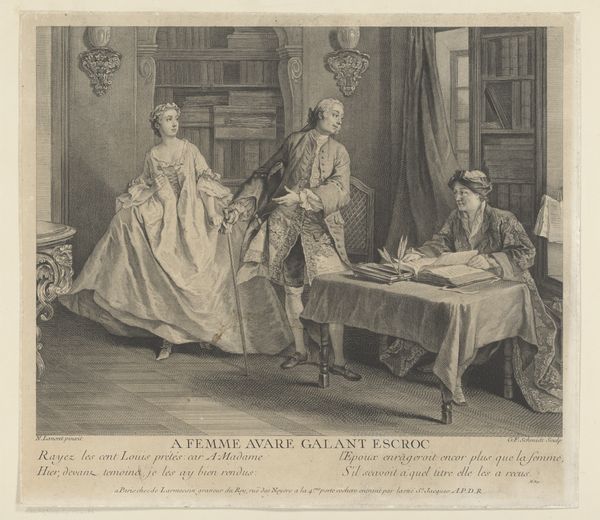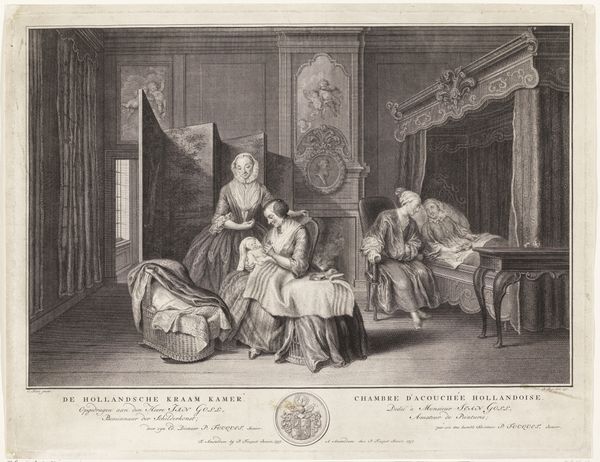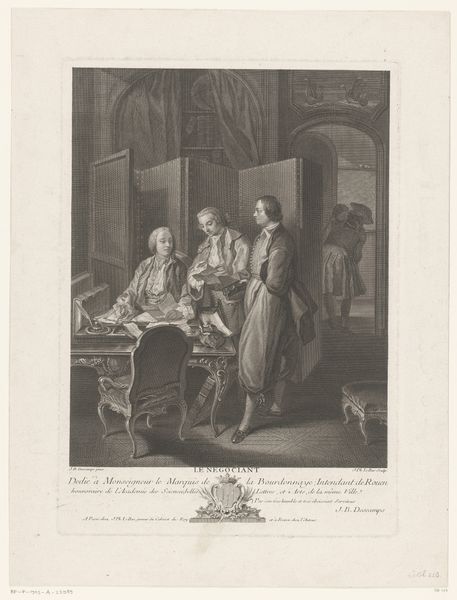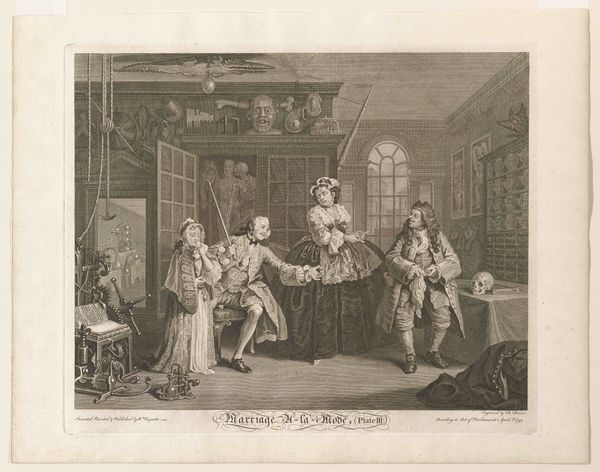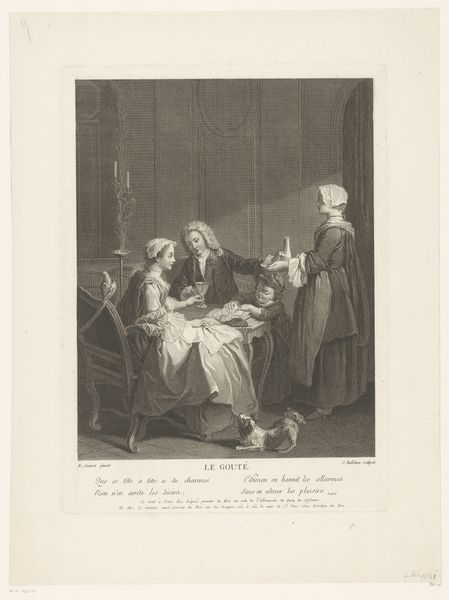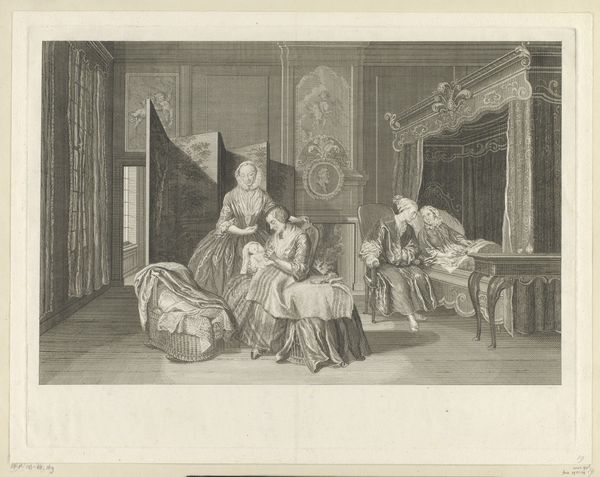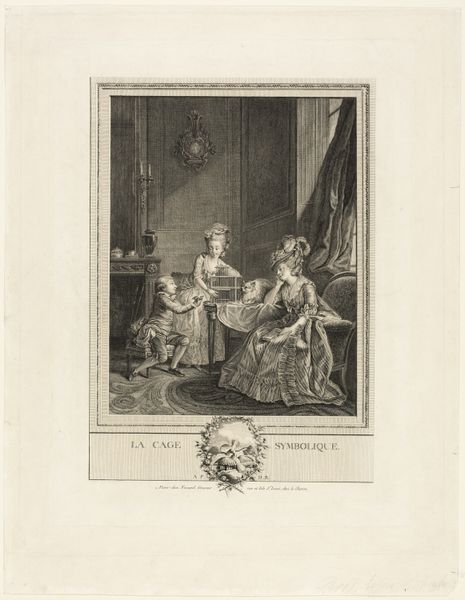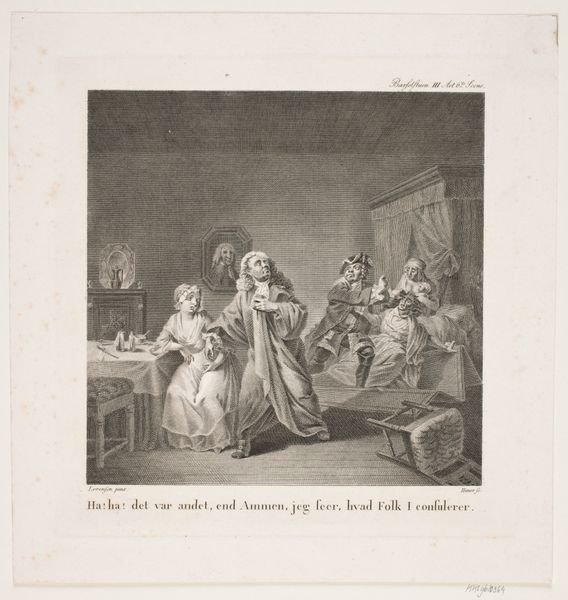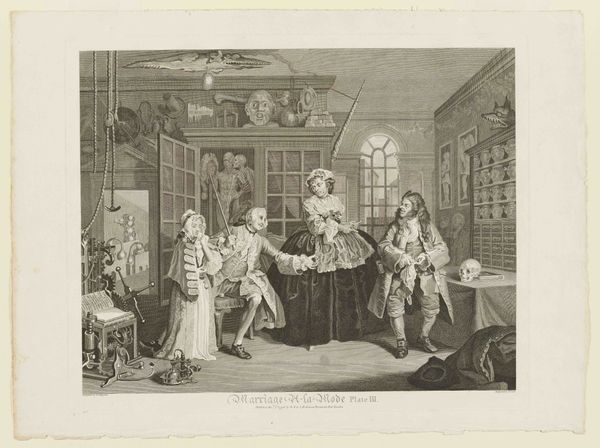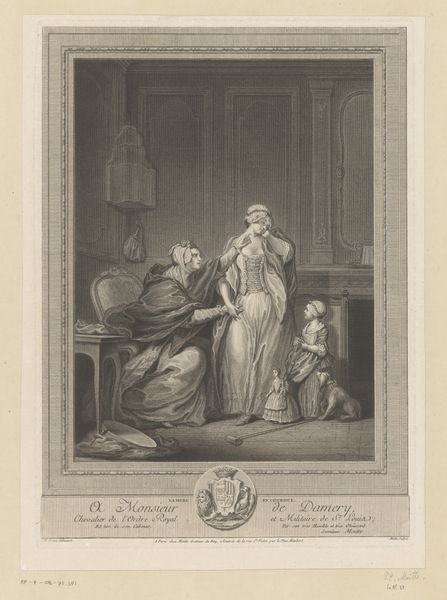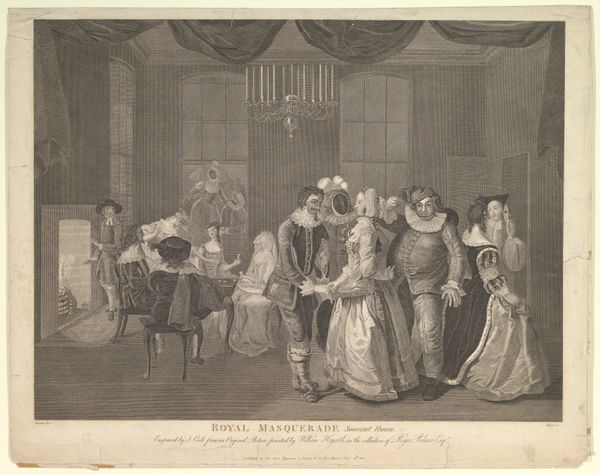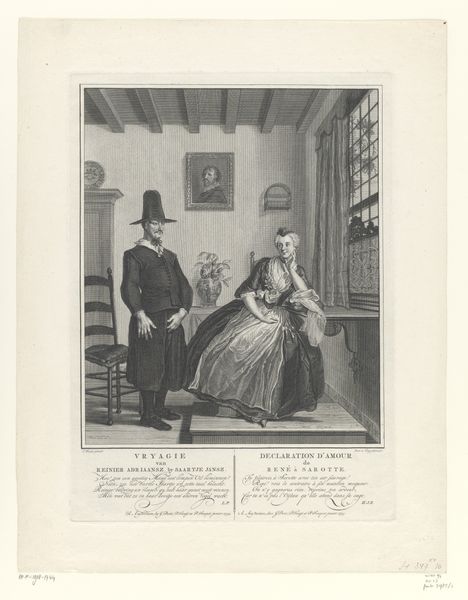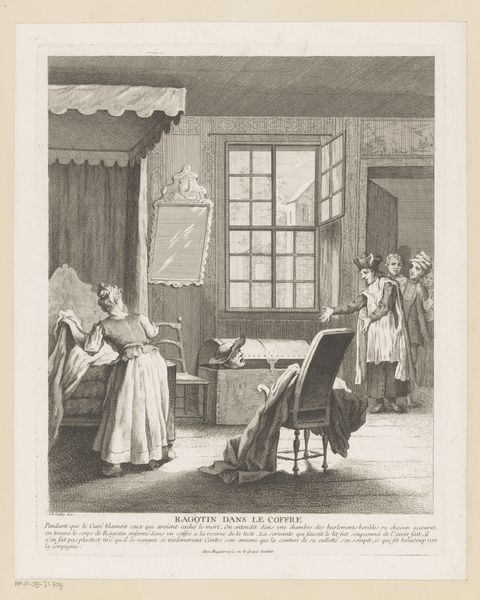
engraving
#
figuration
#
line
#
genre-painting
#
engraving
#
rococo
Dimensions: height 325 mm, width 369 mm
Copyright: Rijks Museum: Open Domain
Editor: This engraving, "Elegant geklede man en vrouw bij een notaris" or, “Elegant man and woman dressed by a notary,” created around 1740-1755 by Nicolas de Larmessin III, has a very staged feel, doesn't it? The people seem almost like actors on a stage, their gestures very deliberate. What can you tell us about this scene? Curator: It’s certainly theatrical! What we see here is a reflection of the Rococo era’s emphasis on elegance, leisure, and social interaction within the aristocracy. Prints like these played a key role in disseminating cultural ideals. Think about the rising middle class at the time. What role did imagery play in their aspirations and understanding of the aristocracy? Editor: I suppose they provided a visual guide for how to behave and what to value? Curator: Exactly! These genre scenes, depicting everyday life, also carried underlying messages. Consider the title - do you read French? "A Femme Avare Galant Escroc"? Editor: I think so, roughly. "A stingy woman, a gallant swindler"... Curator: And where are they meeting? In a notary's office, thus, within the law. This is a critique of societal values. The rising middle class might look to the aristocracy for social guidance but the print highlights potential moral bankruptcy through visual and textual cues, wouldn’t you say? It shapes public perception. How does that strike you? Editor: It’s fascinating how an artwork like this could be both aspirational and critical simultaneously, depending on who was viewing it. It also shows how art became increasingly engaged in political commentary during this period, influencing public opinion. I never really considered the role of art like this as "social instruction manuals" as well!
Comments
No comments
Be the first to comment and join the conversation on the ultimate creative platform.
